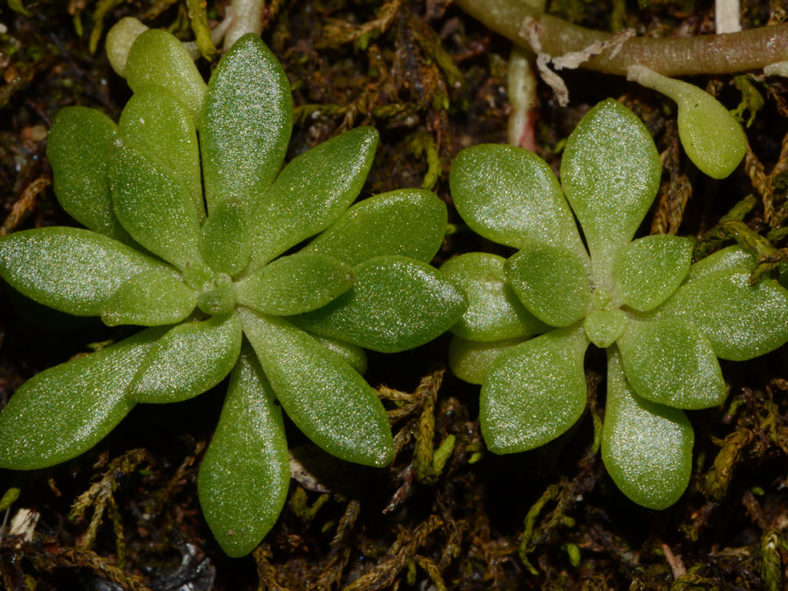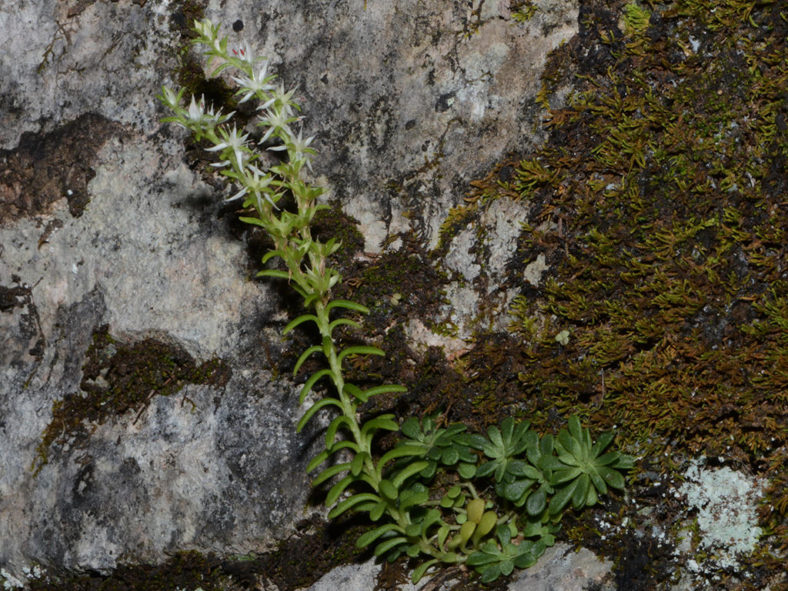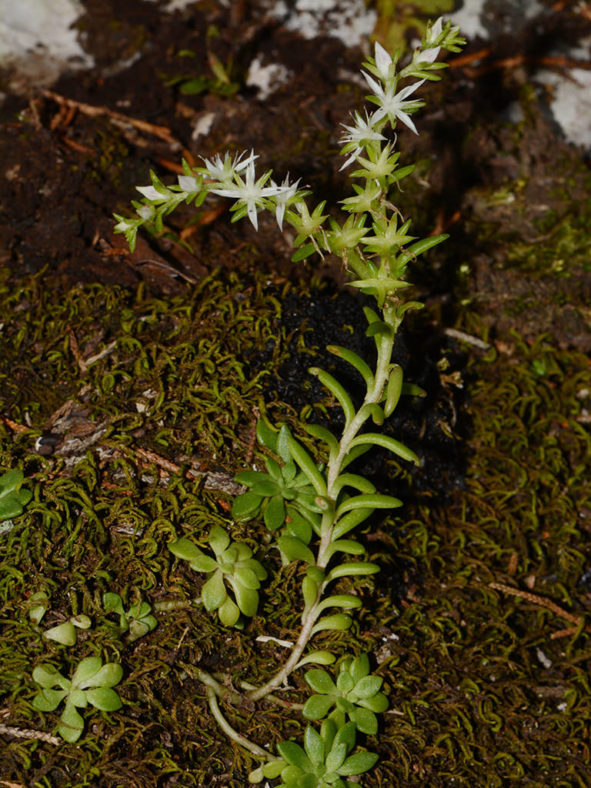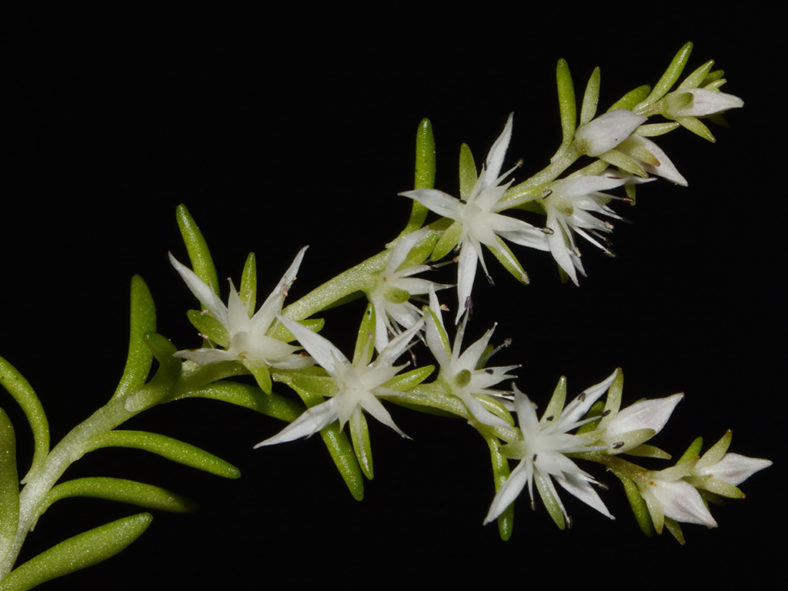Scientific Name
Sedum nevii A. Gray
Synonym(s)
Sedum beyrichianum, Sedum nevii var. beyrichianum
Common Name(s)
Nevius' Stonecrop
Scientific Classification
Family: Crassulaceae
Subfamily: Sempervivoideae
Tribe: Sedeae
Genus: Sedum
Etymology
The specific epithet "nevii" (pronounced "NEE-vee-eye") honors Thomas Anderson Nevius (1814-1865), an American Presbyterian minister, amateur botanist, and plant collector, who discovered this species on the Lookout Mountains of Georgia.
Origin
Sedum nevii is native to the southeastern United States. It occurs in disjunct populations in the southern Appalachian Highlands, growing in partial shade on mats of mosses and lichens.
Description
Sedum nevii is a succulent plant that forms tufts of slender, decumbent, branched stems that bear thick, fleshy, alternately arranged leaves and end in a terminal rosette. The leaves are green or grayish green, papillose on the margin, spoon-shaped with a rounded apex, and have a short petiole, measuring up to 0.45 inches (1.1 cm) in length and approximately 0.12 inches (0.3 cm) in width.
The flowers are white, star-shaped, 4-merous, and can reach a diameter of up to 0.4 inches (1 cm). They appear in summer in clusters with three branches on simple, erect, or pendent stalks that can grow up to 2.4 inches (8.5 cm) long.

How to Grow and Care for Sedum nevii
Light: This succulent thrives in locations that receive full sun for at least six hours daily. It tolerates partial shade but does not thrive in deep shade. Keep your indoor plant in a sunny window or under artificial lights.
Soil: S. nevii does not tolerate waterlogged soil, so drainage is essential to prevent root rot. Choose a well-draining soil mix.
Temperature: This plant is tolerant of heat and freezing temperatures. S. nevii can withstand temperatures as low as -30 °F (-34.4 °C). USDA Plant Hardiness Zones 4a to 9b, -30 to 30 °F (-34.4 to -1.1 °C).
Watering: Water thoroughly from spring through fall and wait for the soil to dry out before watering again. In winter, water your plant just enough to keep it from shriveling. Avoid wetting the leaves, stems, and flowers when watering.
Fertilizing: Feed with a balanced organic fertilizer in spring. Feeding is unnecessary if the plant is divided annually and provided with fresh soil.
Repotting: When your plant outgrows its current pot, transfer it to a larger container to provide better support. Spring is the best time to repot S. nevi. Ensure the soil is dry before beginning the repotting process.
Propagation: Once you have one S. nevii, it is easy to make more by taking stem cuttings and dividing the plant. It is also easy to grow from seed. Take cuttings in spring when the plant is in active growth. Once it has finished flowering, it is the right time for division. Spring or summer is the best time to sow the seeds.
Learn more at How to Grow and Care for Sedum.
Toxicity of Sedum nevii
S. nevii is not listed as toxic for people, but can be mildly toxic to pets and children.
Links
- Back to genus Sedum
- Succupedia: Browse succulents by Scientific Name, Common Name, Genus, Family, USDA Hardiness Zone, Origin, or cacti by Genus
Photo Gallery
Click on a photo to see a larger version.


